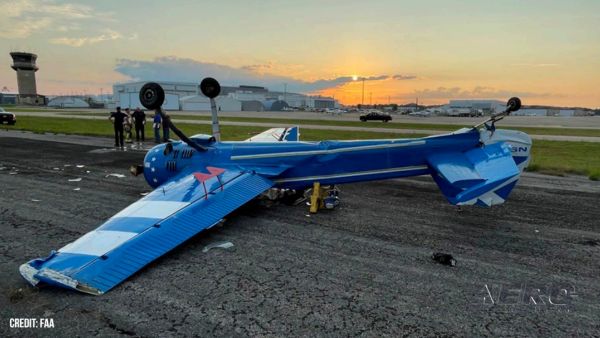Tue, Jun 20, 2023
Pilot Requested A Lower Altitude From Air Traffic Control (ATC) Due To Encountering Ice
Location: Gibbon, NE Accident Number: CEN23FA220
Date & Time: June 2, 2023, 09:07 Local Registration: N977RV
Aircraft: Vans RV7 Injuries: 1 Fatal
Flight Conducted Under: Part 91: General aviation - Personal

On June 2, 2023, at about 0907 Central Daylight Time, a Vans RV-7, N977RV, was destroyed when it was involved in an accident in Gibbon, Nebraska. The pilot was fatally injured. The airplane was operated as a Title 14 Code of Federal Regulations Part 91 personal flight.
Automatic Dependent Surveillance – Broadcast (ADS-B) data revealed that the airplane departed Rocky Mountain Metropolitan Airport (BJC), Denver, Colorado, at 0610 and proceeded direct toward Red Oak Municipal Airport (RDK), Red Oak, Iowa. The pilot filed an instrument flight plan. About two hours after departure from BJC, at an altitude of 15,000 ft mean sea level (msl), the pilot requested a lower altitude from air traffic control (ATC) due to encountering ice. The controller gave the pilot a block altitude between 11,000 and 15,000 ft msl, and the pilot began a descent. Shortly after the pilot began his descent, the controller advised him that there was “extreme precipitation” in the area. About one minute later, the controller told the pilot that he was permitted a lower altitude if he wished to continue to descend. There was no further response from the pilot.
Dashboard camera footage from a car traveling east bound on Interstate 80, captured the airplane descending in a nose-down attitude. The airplane impacted an open grassy area surrounded by trees about 260 ft south of the interstate. The debris field was generally aligned on a 257° heading, and the main wreckage came to rest upright. Ground scaring at the accident site confirmed that the airplane was in a nose-down attitude when it struck the ground. The initial impact point consisted of a two-foot deep crater with the propeller embedded in it. The propeller was still intact at the hub; however, it was separated from the engine flange.
The dashboard board camera footage also revealed that it was raining heavily at the time of the accident with a low overcast cloud layer. Weather radar images at the time of the accident depicted heavy precipitation and thunderstorms in the vicinity.
More News
From 2021: The Inside Skinny On What Being An ANN Oshkosh Stringer Is All About By ANN Senior Stringer Extraordinare, Gene Yarbrough The annual gathering at Oshkosh is a right of p>[...]
Pilot Asked The Mechanic To Go For A Test Flight Around The Airport Traffic Pattern With Him For A Touch-And-Go Landing, And Then A Full-Stop Landing On May 7, 2025, about 1600 eas>[...]
From 2010 (YouTube Edition): Skiles Reflects On His Ring-Side Seat To An Historic Event Jeff Skiles, First Officer of US Airways Flight 1549, "The Miracle on the Hudson," was the g>[...]
“The FAA conducted a comprehensive safety review of the SpaceX Starship Flight 8 mishap and determined that the company has satisfactorily addressed the causes of the mishap,>[...]
Fuel Remaining A phrase used by either pilots or controllers when relating to the fuel remaining on board until actual fuel exhaustion. When transmitting such information in respon>[...]
 Oshkosh Memories: An Aero-News Stringer Perspective
Oshkosh Memories: An Aero-News Stringer Perspective NTSB Prelim: Diamond Aircraft Ind Inc DA 40 NG
NTSB Prelim: Diamond Aircraft Ind Inc DA 40 NG Classic Aero-TV: US Airways Jeff Skiles-Making History and Looking To The Future
Classic Aero-TV: US Airways Jeff Skiles-Making History and Looking To The Future Aero-News: Quote of the Day (05.26.25)
Aero-News: Quote of the Day (05.26.25) ANN's Daily Aero-Term (05.26.25): Fuel Remaining
ANN's Daily Aero-Term (05.26.25): Fuel Remaining



